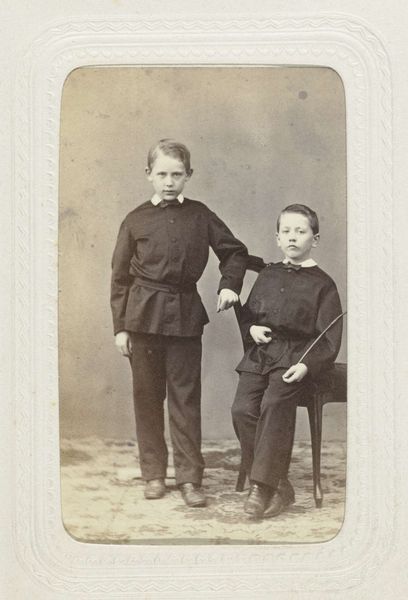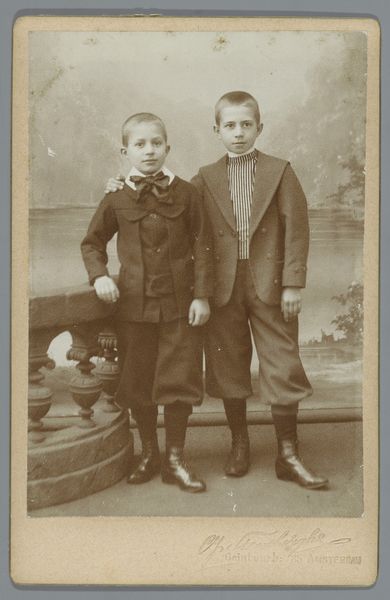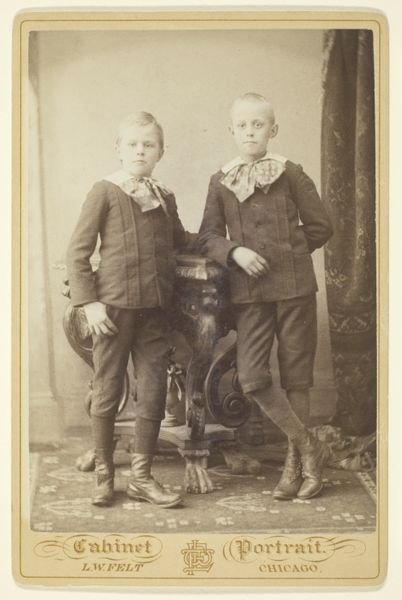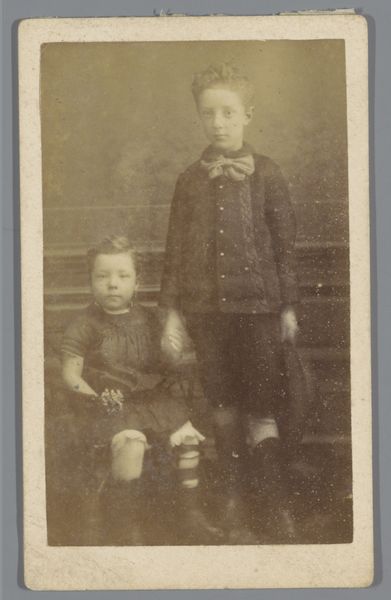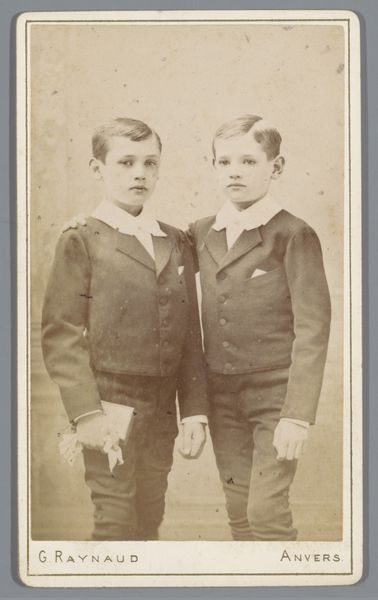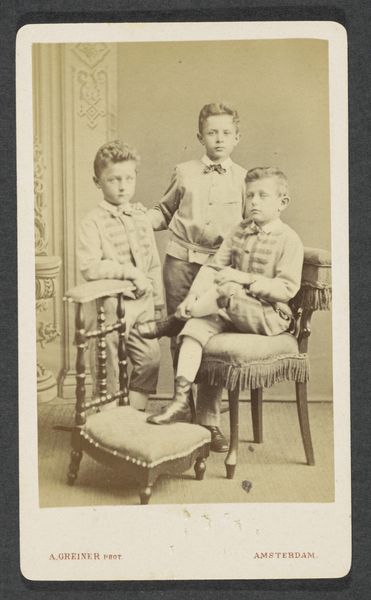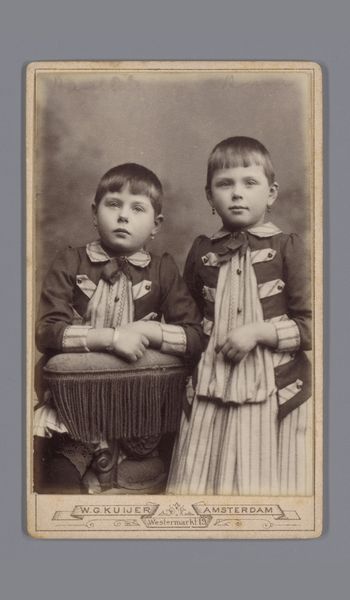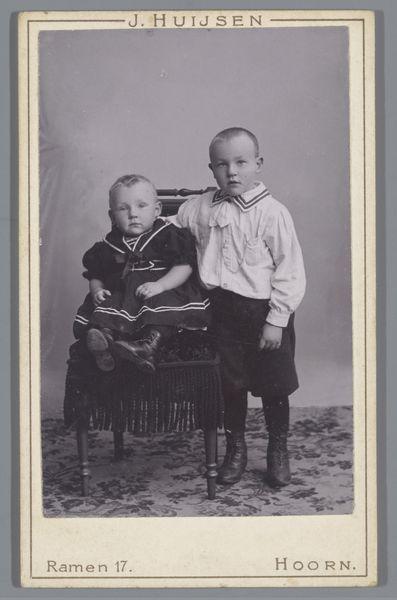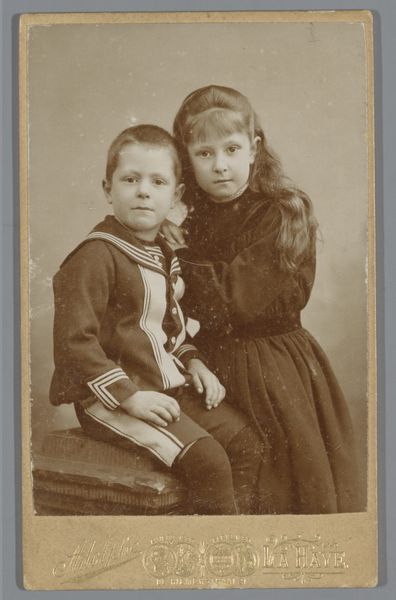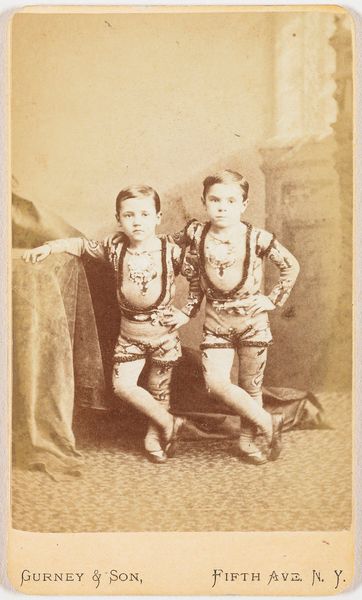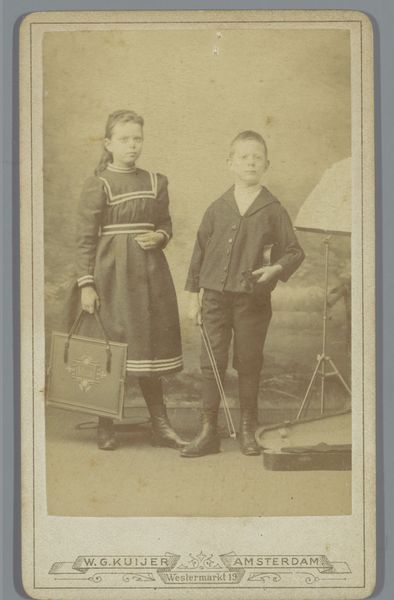
Portret van twee onbekende kinderen uit de familie Marmelstein 1861 - 1874
0:00
0:00
albertgreiner
Rijksmuseum
photography, albumen-print
#
portrait
#
muted colour palette
#
photography
#
historical fashion
#
child
#
framed image
#
group-portraits
#
albumen-print
Dimensions: height 104 mm, width 61 mm
Copyright: Rijks Museum: Open Domain
Editor: This is a portrait called "Portret van twee onbekende kinderen uit de familie Marmelstein" by Albert Greiner, dating from around 1861 to 1874. It’s an albumen print, and I find the expressions on their faces so intriguing… almost haunting. What can you tell me about this piece? Curator: Well, it’s more than just a haunting image, it's a complex representation of childhood in a rapidly changing societal landscape. These boys, products of the Marmelstein family, are carefully positioned within the frame. What does their formal attire signify to you? Consider the socio-economic context of the time. Editor: I guess it speaks to their family's status… the ruffled collars and neatly buttoned jackets suggest privilege. Maybe even conformity to societal expectations? Curator: Precisely. And who dictates those expectations? Think about the power dynamics at play during the mid-19th century. This wasn’t simply a family snapshot; it was a carefully constructed performance of identity. These portraits functioned as social currency, reinforcing bourgeois values and projecting an image of respectability. But there's also something subtly defiant in their gaze, isn't there? Editor: I see what you mean. The older boy especially has quite a stare! It almost feels like a challenge to the viewer. So this isn’t just a picture of two kids, it’s a statement? Curator: Exactly. By situating this portrait within its historical and social context, we begin to understand how seemingly simple images are in fact powerful cultural artifacts. It shows how identity, gender, and even class, are being performed, captured and reinforced by photographic practices. It’s crucial to deconstruct these visual narratives, because photographs can reinforce very powerful ideologies. Editor: Wow, I never thought about it that way before! I thought they were just, you know, posing for a photo. Curator: Precisely! Now you're starting to engage with the deeper layers of meaning. Editor: I’ll definitely look at historical photos differently from now on! Thank you.
Comments
No comments
Be the first to comment and join the conversation on the ultimate creative platform.
